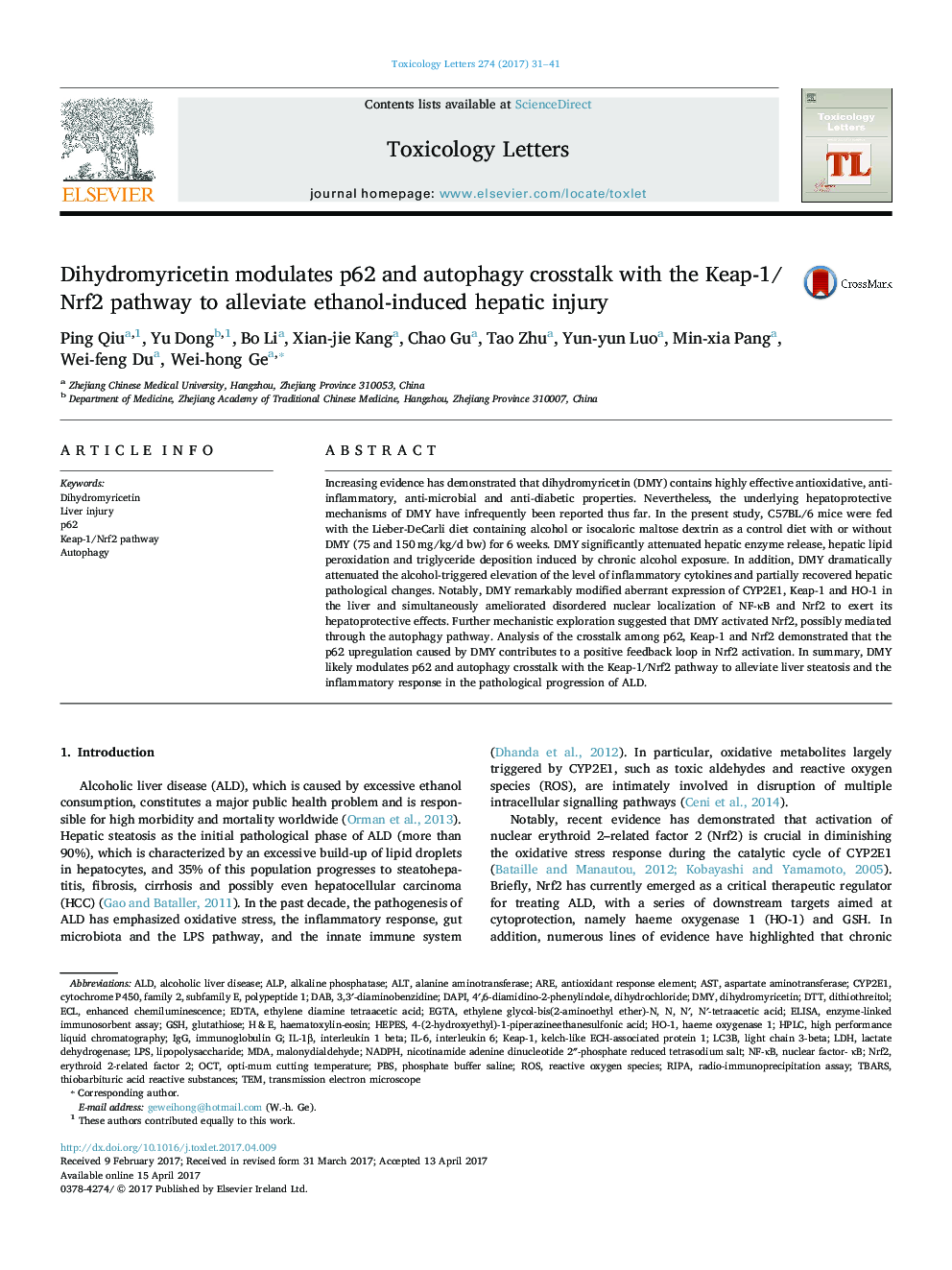| کد مقاله | کد نشریه | سال انتشار | مقاله انگلیسی | نسخه تمام متن |
|---|---|---|---|---|
| 5562081 | 1562599 | 2017 | 11 صفحه PDF | دانلود رایگان |

• Dihydromyricetin efficaciously protects against ethanol-induced liver damage.
• Dihydromyricetinpromotesp62-mediated Keap1 inactivation and Nrf2 activation.
• Dihydromyricetin inducessufficientautophagy to confirm p62-mediated Keap-1 degradation.
Increasing evidence has demonstrated that dihydromyricetin (DMY) contains highly effective antioxidative, anti-inflammatory, anti-microbial and anti-diabetic properties. Nevertheless, the underlying hepatoprotective mechanisms of DMY have infrequently been reported thus far. In the present study, C57BL/6 mice were fed with the Lieber-DeCarli diet containing alcohol or isocaloric maltose dextrin as a control diet with or without DMY (75 and 150 mg/kg/d bw) for 6 weeks. DMY significantly attenuated hepatic enzyme release, hepatic lipid peroxidation and triglyceride deposition induced by chronic alcohol exposure. In addition, DMY dramatically attenuated the alcohol-triggered elevation of the level of inflammatory cytokines and partially recovered hepatic pathological changes. Notably, DMY remarkably modified aberrant expression of CYP2E1, Keap-1 and HO-1 in the liver and simultaneously ameliorated disordered nuclear localization of NF-κB and Nrf2 to exert its hepatoprotective effects. Further mechanistic exploration suggested that DMY activated Nrf2, possibly mediated through the autophagy pathway. Analysis of the crosstalk among p62, Keap-1 and Nrf2 demonstrated that the p62 upregulation caused by DMY contributes to a positive feedback loop in Nrf2 activation. In summary, DMY likely modulates p62 and autophagy crosstalk with the Keap-1/Nrf2 pathway to alleviate liver steatosis and the inflammatory response in the pathological progression of ALD.
Figure optionsDownload high-quality image (255 K)Download as PowerPoint slide
Journal: Toxicology Letters - Volume 274, 15 May 2017, Pages 31–41